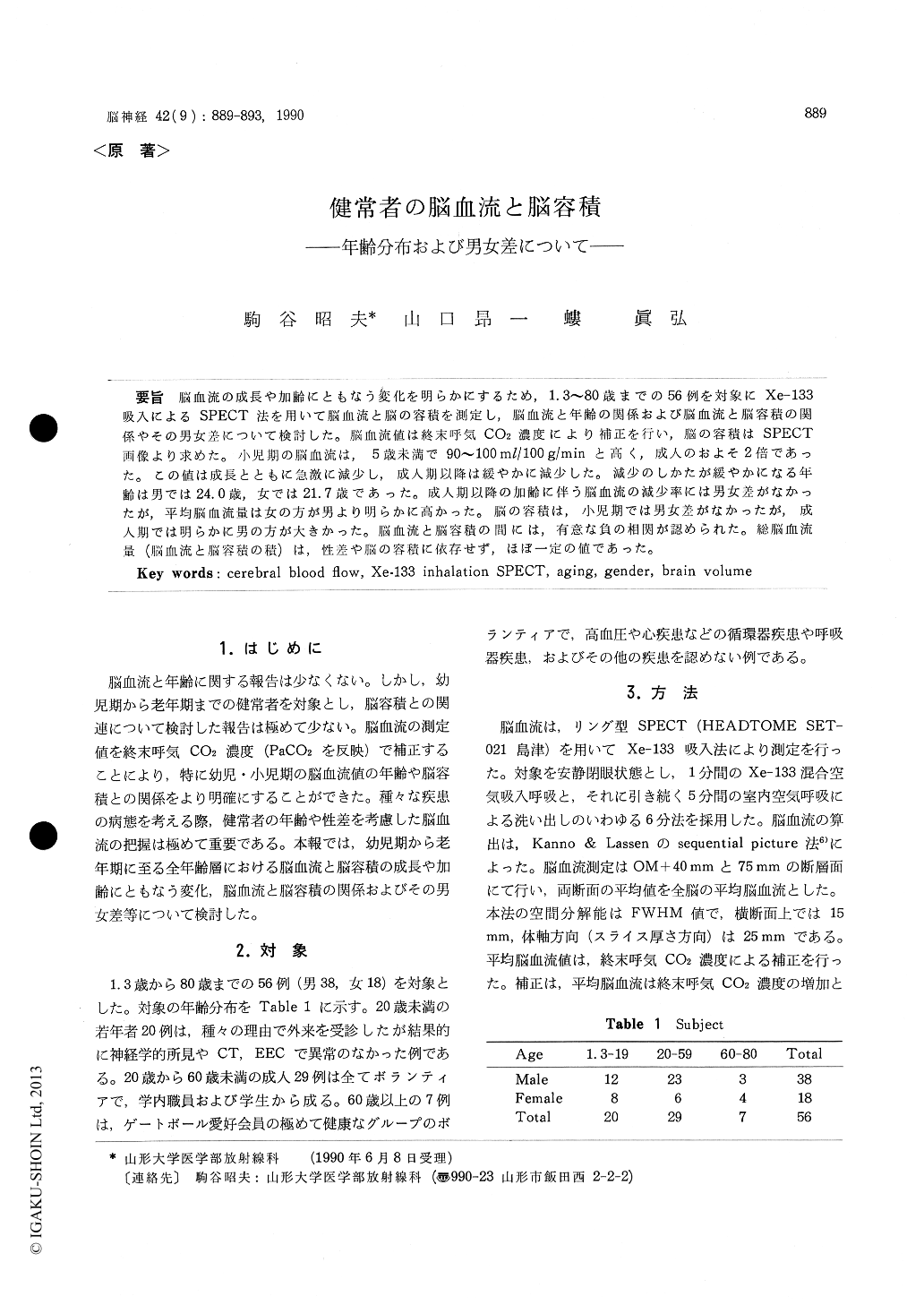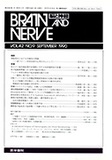Japanese
English
- 有料閲覧
- Abstract 文献概要
- 1ページ目 Look Inside
脳血流の成長や加齢にともなう変化を明らかにするため,1.3〜80歳までの56例を対象にXe−133吸入によるSPECT法を用いて脳血流と脳の容積を測定し,脳血流と年齢の関係および脳血流と脳容積の関係やその男女差について検討した。脳血流値は終末呼気CO2濃度により補正を行い,脳の容積はSPECT画像より求めた。小児期の脳血流は,5歳未満で90〜100ml/100g/minと高く,成人のおよそ2倍であった。この値は成長とともに急激に減少し,成人期以降は緩やかに減少した。減少のしかたが緩やかになる年齢は男では24.0歳,女では21.7歳であった。成人期以降の加齢に伴う脳血流の減少率には男女差がなかったが,平均脳血流量は女の方が男より明らかに高かった。脳の容積は,小児期では男女差がなかったが,成人期では明らかに男の方が大きかった。脳血流と脳容積の間には,有意な負の相関が認められた。総脳血流量(脳血流と脳容積の積)は,性差や脳の容積に依存せず,ほぼ一定の値であった。
Cerebral blood flow was measured in 56 heal-thy subjects who ranged in age from 1. 3 to 80years. The Xe-133 inhalation method with ring type single photon emission computed tomography (SPECT); HEADTOME was used. The cerebral blood flow were calculated by the method of Kanno & Lassen. Then the value were corrected for end-tidal CO2 concentration that had an excellent correlation with PaCO2 and was one of the most sensitive factors to change cerebral blood flow. The brain-size index was obtained by measuring the lateral and antero-posterior diameters from the SPECT images.
The mean cerebral blood flow in children less than five years of age was 90-100 ml/100 g/min that was approximately twice that found in adults. The mean cerebral blood flow decreasedrapidly with age unil 24.0 years of age in male and 21. 7 in female. Thereafter, there was a slow decrease and a negative correlation with age was found. In adults, the mean value of the cerebral blood flow of females was slightly higher than that of males (p<0. 01). In contrast, the brain-size index of females was significantly smaller than that in males (p<0. 01). There was a significant negative correlation to an inverse proportionality of cerebral blood flow and brain-size index (p<0. 002). But, there was no sign-ificant correlation between total flow index that obtained to multiplied mean flow by brain-size index and brain-size index or gender.

Copyright © 1990, Igaku-Shoin Ltd. All rights reserved.


